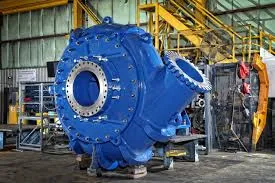English
- Afrikaans
- Albanian
- Amharic
- Arabic
- Armenian
- Azerbaijani
- Basque
- Belarusian
- Bengali
- Bosnian
- Bulgarian
- Catalan
- Cebuano
- Corsican
- Croatian
- Czech
- Danish
- Dutch
- English
- Esperanto
- Estonian
- Finnish
- French
- Frisian
- Galician
- Georgian
- German
- Greek
- Gujarati
- Haitian Creole
- hausa
- hawaiian
- Hebrew
- Hindi
- Miao
- Hungarian
- Icelandic
- igbo
- Indonesian
- irish
- Italian
- Japanese
- Javanese
- Kannada
- kazakh
- Khmer
- Rwandese
- Korean
- Kurdish
- Kyrgyz
- Lao
- Latin
- Latvian
- Lithuanian
- Luxembourgish
- Macedonian
- Malgashi
- Malay
- Malayalam
- Maltese
- Maori
- Marathi
- Mongolian
- Myanmar
- Nepali
- Norwegian
- Norwegian
- Occitan
- Pashto
- Persian
- Polish
- Portuguese
- Punjabi
- Romanian
- Russian
- Samoan
- Scottish Gaelic
- Serbian
- Sesotho
- Shona
- Sindhi
- Sinhala
- Slovak
- Slovenian
- Somali
- Spanish
- Sundanese
- Swahili
- Swedish
- Tagalog
- Tajik
- Tamil
- Tatar
- Telugu
- Thai
- Turkish
- Turkmen
- Ukrainian
- Urdu
- Uighur
- Uzbek
- Vietnamese
- Welsh
- Bantu
- Yiddish
- Yoruba
- Zulu
Telephone: +86 13120555503
Email: frank@cypump.com
Oct . 05, 2024 18:44 Back to list
Choosing the Right Sump Pump for Your Sewage Management Needs
Understanding Sump Pump Sewage Systems
A sump pump is a critical component in managing water and sewage in homes and basements, particularly in flood-prone areas or regions with high water tables. As the name suggests, a sump pump is designed to remove accumulated water from a sump basin, which is typically installed in the lowest part of a home, such as the basement. This article delves into the importance, functionality, and maintenance of sump pumps, especially in relation to sewage management.
The Importance of Sump Pumps
Sump pumps play a significant role in preventing water damage. Excess moisture can lead to serious issues such as mold growth, structural damage, and unpleasant odors. For homes situated in areas prone to heavy rainfall or flooding, having a sump pump can be the difference between a dry basement and a costly repair job. Moreover, when wastewater accumulates, a sump pump can also help to manage sewage, ensuring that waste is directed away from living spaces, thereby maintaining a safe and healthy environment.
How Sump Pumps Work
Sump pumps operate through a relatively simple mechanism. When water enters the sump basin, a float switch activates the pump. The pump then moves the water through a discharge pipe, leading it away from the home's foundation. In the case of sewage, a sewage pump is usually utilized, which is designed to handle solids and wastewater. These pumps are typically more robust and are equipped with additional features such as grinding mechanisms that reduce larger particles to a manageable size.
sump pump sewage

There are primarily two types of sump pumps submersible and pedestal. Submersible pumps are encased in a waterproof housing and sit at the bottom of the sump pit. They are usually quieter and more efficient in terms of energy use. Pedestal pumps, on the other hand, are positioned above the sump pit and use a long shaft to reach the water. While they are easier to service, they tend to be noisier and can be less aesthetically pleasing.
Maintenance of Sump Pumps
Regular maintenance is crucial to ensure the effective functioning of sump pumps. Homeowners should routinely check the pump to ensure it is clean and free of debris. It is also advisable to test the pump by pouring water into the sump pit to see if the pump activates. Furthermore, ensuring that the discharge pipe is not clogged or frozen is vital for the pump’s efficiency, especially during winter.
Additionally, unexpected power outages can pose a risk to sump pump functionality. Investing in a battery backup system can provide peace of mind during storms or other situations where electricity may be disrupted.
Conclusion
Sump pumps are essential devices for protecting homes from water damage and managing sewage. Understanding their purpose, functionality, and maintenance can help homeowners safeguard their properties effectively. As climate change continues to bring more extreme weather patterns, the role of sump pumps in home safety and hygiene becomes ever more crucial. Investing in a reliable sump pump system and ensuring its proper maintenance can save homeowners from significant headaches and financial losses in the long run.
-
ISG Series Vertical Pipeline Pump - Chi Yuan Pumps Co., LTD.|High Efficiency, Energy Saving, Low Noise
NewsJul.30,2025
-
ISG Series Vertical Pipeline Pump- Chi Yuan Pumps|High Efficiency&Low Noise
NewsJul.30,2025
-
ISG Series Vertical Pipeline Pump-Chi Yuan Pumps Co., LTD.|High Efficiency&Energy Conservation
NewsJul.30,2025
-
ISG Series Vertical Pipeline Pump - Chi Yuan Pumps Co., LTD.|Advanced Hydraulic Design&Energy-Efficient Solutions
NewsJul.30,2025
-
ISG Series Vertical Pipeline Pump - Chi Yuan Pumps Co., LTD.
NewsJul.30,2025
-
ISG Series Vertical Pipeline Pump - Chi Yuan Pumps Co., LTD.|energy-efficient fluid handling&industrial durability
NewsJul.30,2025










